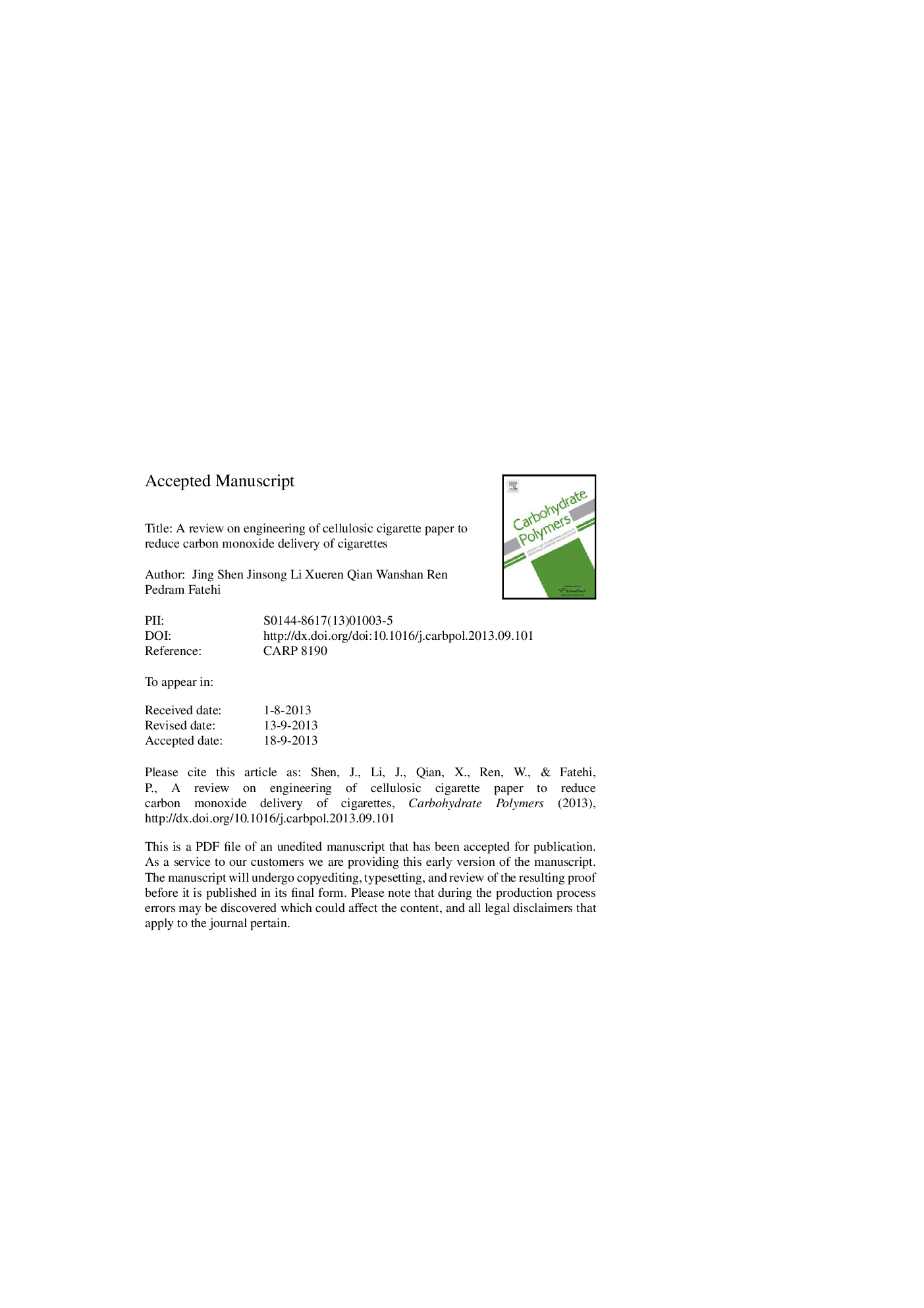| Article ID | Journal | Published Year | Pages | File Type |
|---|---|---|---|---|
| 7793167 | Carbohydrate Polymers | 2014 | 36 Pages |
Abstract
In cigarette production, the cellulosic paper essentially derived from flax fibers or other fiber materials is used as the wrapping material. During smoking of cigarettes, the highly toxic carbon monoxide is produced. To decrease the amount of carbon monoxide emission in the mainstream smoke, the engineering of all cigarette components including cellulosic cigarette paper and tobacco column is critical. This review summarizes the concepts related to engineering of cigarette paper. These mainly include permeability control, increased use of burn additives, optimization of fiber basis weight, engineering of calcium carbonate fillers, and incorporation of catalysts/oxidants. In particular, catalytic and/or oxidative conversion of carbon monoxide to carbon dioxide has been very widely reported. The control of permeability/diffusivity of cigarette paper is also of critical importance for enhanced diffusion of carbon monoxide out of the cigarette. The development of new concepts and combination of various concepts may lead to breakthroughs in this area.
Related Topics
Physical Sciences and Engineering
Chemistry
Organic Chemistry
Authors
Jing Shen, Jinsong Li, Xueren Qian, Wanshan Ren, Pedram Fatehi,
